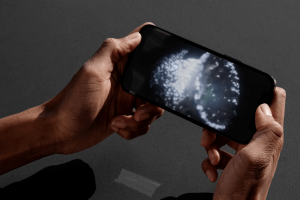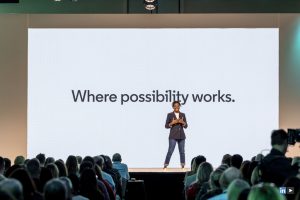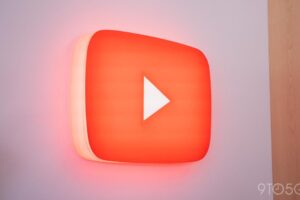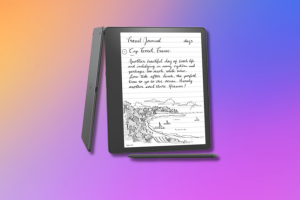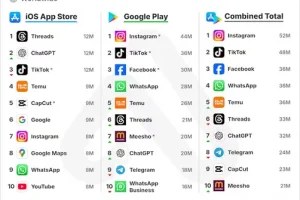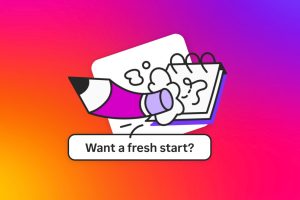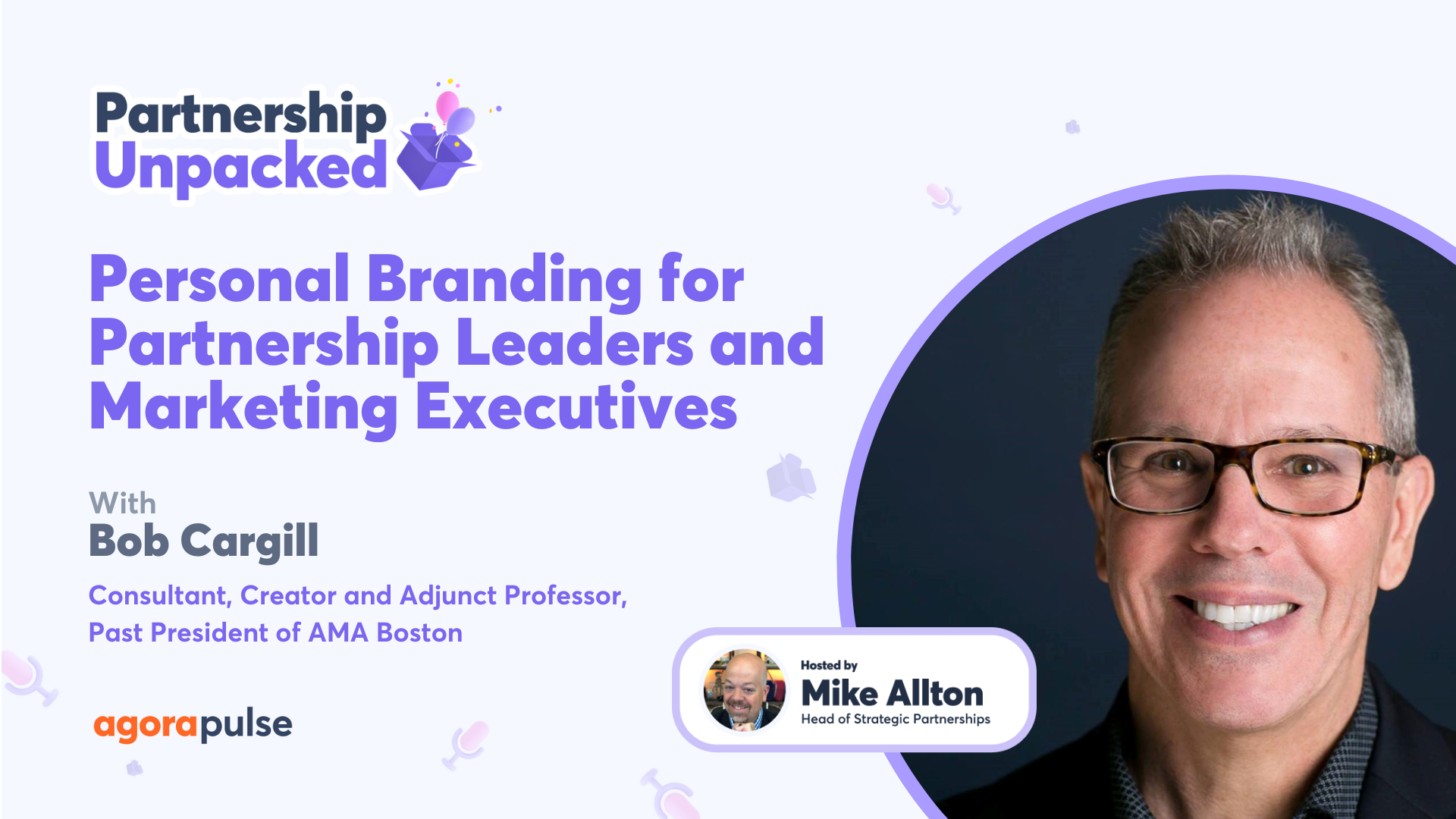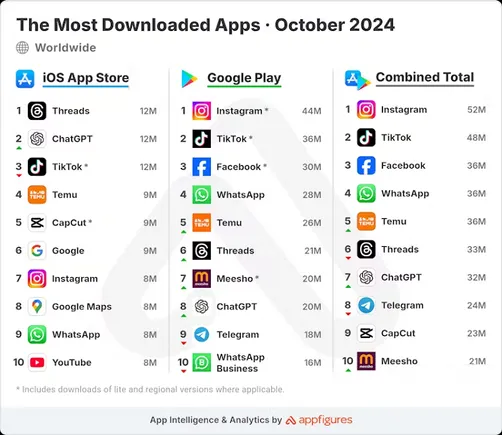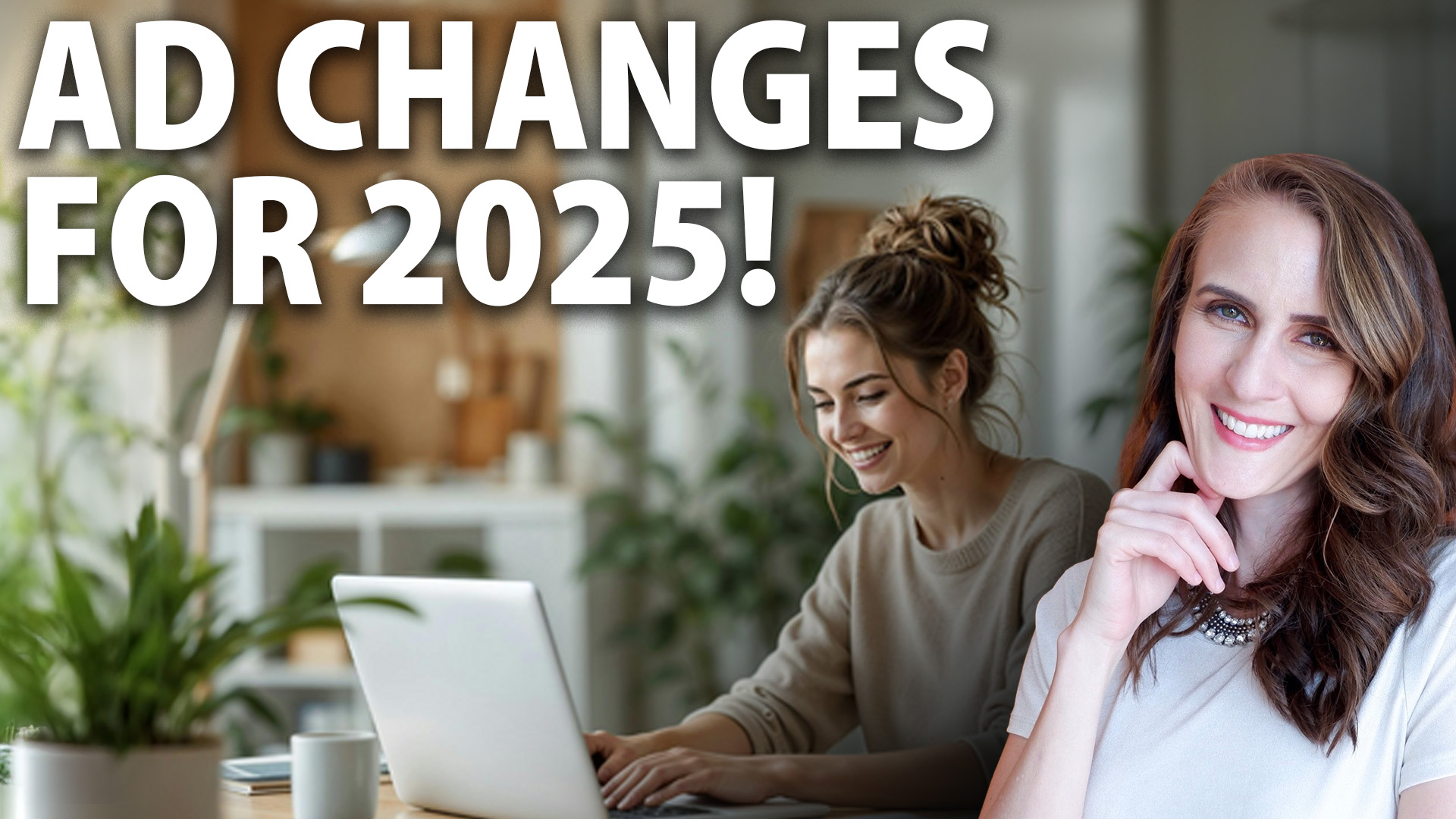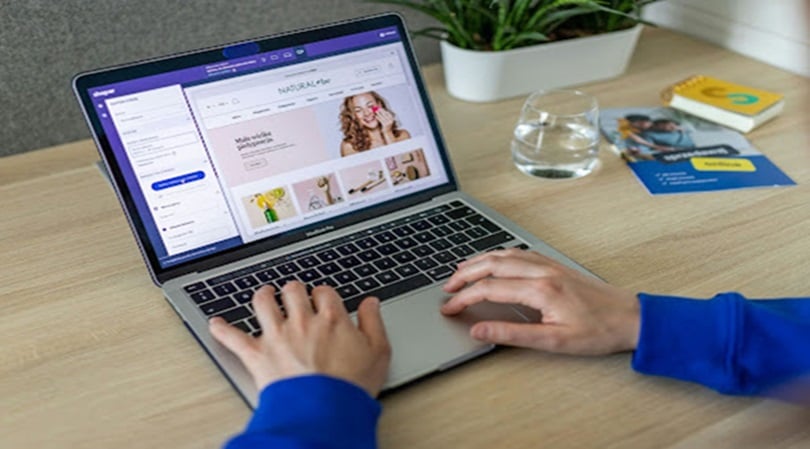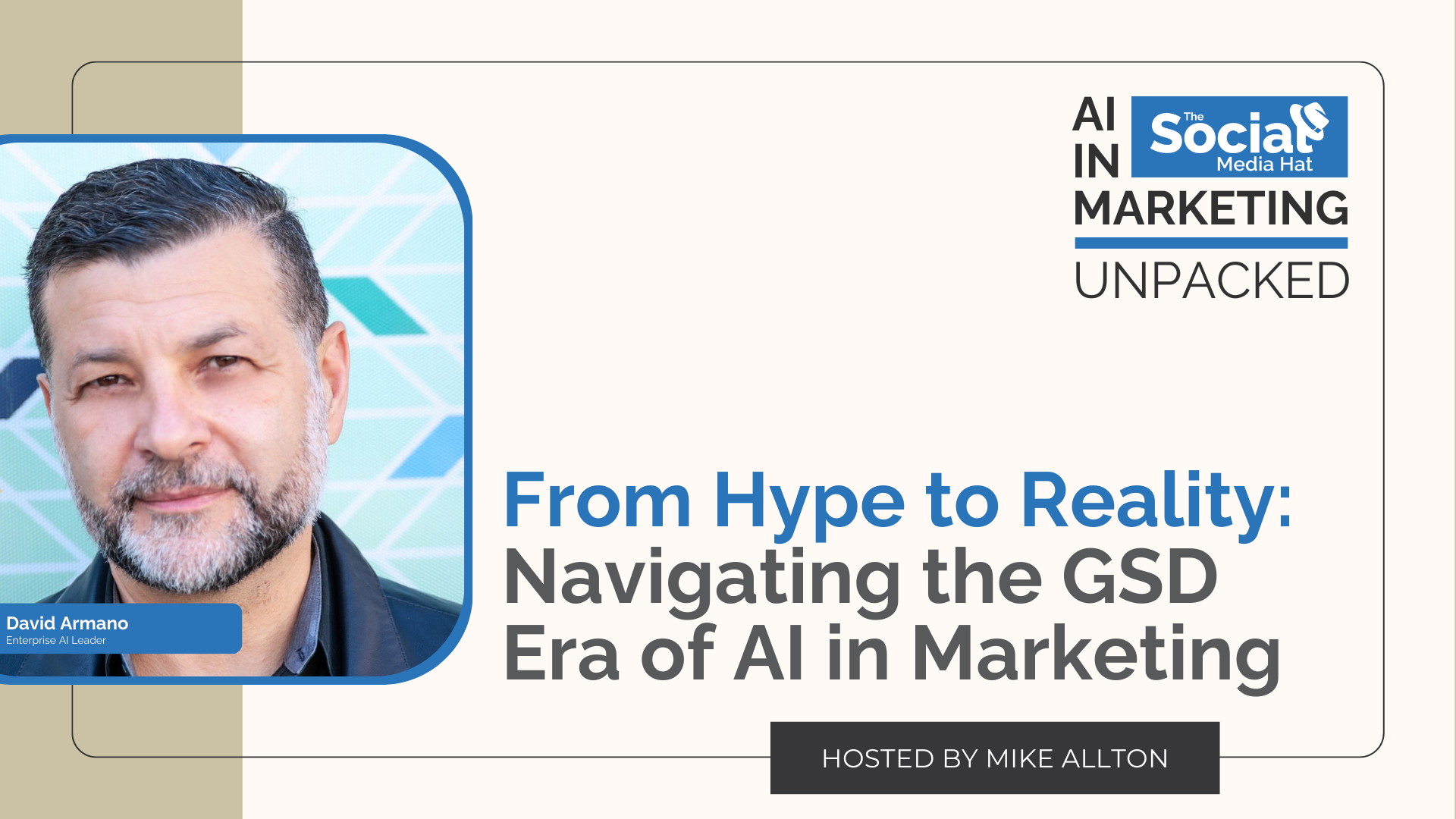Relationships are everything. That’s been the resounding theme throughout every episode of this podcast. From developing strategic brand partnerships, to working with brilliant influencers, every guest has stressed how important it is to develop key relationships. What they haven’t said though is how important personal branding is to that endeavor.
Whether you’re a seasoned marketing executive or an up-and-coming B2B influencer, personal branding is essential for establishing critical connections online.
We all know LinkedIn is the network to focus on, and that we need to show up regularly, but what does that mean, exactly? How do we create content and activity that builds community and grows our network?
That’s what we’re covering in today’s episode of Partnership Unpacked.
Welcome back to Partnership Unpacked, where I selfishly use this time to pick the brains of experts at strategic partnerships, channel programs, affiliates, influencer marketing, and relationship building… oh, and you get to learn too! Subscribe to learn how you can amplify your growth strategy – with a solid takeaway every episode from partnership experts in the industry.
Read any blog post about personal branding and you’ll read trite advice like:
- Be Authentic
- Start Blogging
- Provide Value
That’s superficial at best. Because you and I are busy, goal-driven professionals, we want advice that’s tactical and strategically relevant to us as marketing and partnership professionals.
That’s exactly what our guest today, Bob Cargill, is going to talk to us about.
Bob has worked for hundreds of clients over the years, when he wasn’t leading the American Marketing Association of Boston or the New England Direct Marketing Association. Where, by the way, he delivered award-winning content about LinkedIn. He’s a writer, a podcaster, a YouTuber, an adjunct professor, a social media consultant and a speaker… and that’s why it should come as no surprise that his book is titled, “Twenty Jobs, Twenty Lessons – a Long, Strange Career in Marketing, from Junk Mail to Social Media.”
We’ll have the link to the book in the show notes but even better, we’ve got Bob here in the studio with us so we can pick his brain!
Partnership Unpacked host Mike Allton talked to Bob Cargill about:
♉️ How to measure the success of personal brand and social media
♉️ The key steps and tactics for marketing executives and partnership leaders
♉️ How to balance full time work with “personal” social media activity
Learn more about Bob Cargill
Resources & Brands mentioned in this episode
Full Notes & Transcript:
(Lightly edited)
Personal Branding for Partnership Leaders and Marketing Executives with Bob Cargill
[00:00:00] Mike Allton: Relationships are everything that’s been the resounding theme throughout every episode of this podcast. From developing strategic brand partnerships to working with brilliant influencers, every guest has stressed how important it’s to develop key relationships. What they haven’t said though, is how important personal branding is to that endeavor.
Whether you’re a seasoned marketing executive or an up and coming B two B influencer, personal branding is essential for establishing critical connections online. We all know LinkedIn is the network to focus on and that we need to show up regularly, but what does that mean exactly? How do we create content and activity that builds community and grows our network?
That’s what we’re covering in today’s episode of Partnership. Unpacked.
This is Partnership unpacked your Go-to Guide to Growing Your Business through partnerships quickly. I’m your host, Mike Galton, and each episode unpacks the winning strategies and latest trends from influencer marketing to brand partnerships and ideas that you can apply your own business to grow exponentially.
And now, The rest of today’s episode,
welcome back to Partnership Unpacked, where I selfishly use this time to pick the brains of experts at strategic partnerships, channel programs, affiliates, influencer marketing, and relationship building. Oh, and you get to learn too. Subscribe to learn how you can amplify your growth strategy with a solid takeaway.
Every episode from partnership experts in the industry, now read any blog post about personal branding, and you’ll read trite advice like, Be authentic. Start blogging. Provide value that’s superficial at best. ’cause you and I are busy goal-driven professionals. We want advice that’s tactical and strategically relevant to us as marketing and partnership professionals.
That’s exactly what our guest today, Bob Cargill’s gonna talk to us about. Bob has worked. For hundreds of clients over the years when he wasn’t leading the American Marketing Association of Boston or the New England Direct Marketing Association, where by the way, he delivered award-winning content about LinkedIn.
He’s a writer, a podcaster, a YouTuber, an adjunct professor, a social media consultant, and a speaker. That’s why it should come as no surprise that his book is titled 20 Jobs. 20 Lessons. A Long Strange Career in Marketing from Junk Mail. To social media. We’ll have a link to the book in the show notes, but even better, we’ve got Bob here in the studio so we can pick his brain.
Hey Bob. Welcome to the show,
[00:02:33] Bob Cargill: Mike. Thanks for having me. Really excited to be here today. [00:02:36] Mike Allton: My pleasure. Now, talk to us about your journey. Why do you think your career in marketing has been so strange? [00:02:44] Bob Cargill: So strange, might be a strange word, and an extreme word you could say unique. You could say. Different little outta the box, but I’ve been around for, in the industry.
I have touched five different decades, believe it or not, in marketing. Starting in 1983 did my career start and that was before the internet. So I’ve seen so much and I have worked at, at so many different jobs and I’ve. Kept up with the trends. I mean, when I was writing direct mail, then email, and then when the internet came along, I embraced social media.
I have tried to stay on top of tools, technologies, as you mentioned, tactics, strategies, you name it, in order to keep on. The forefront of what was working effectively in the industry of marketing. So, again, strange might be a strong word, but I think unique because of how long I’ve been in business and how many different jobs I’ve had.
[00:03:45] Mike Allton: I couldn’t agree more. I’ve seen your progression. I’ve seen how you’ve come out of direct marketing and that sort of thing, which I don’t see a lot of people go from that into. Digital marketing, at least not successfully. And I could personally attest to the way that you’re embracing social media today.
I’ve, I see your vertical videos and those kinds of things, which is, which is very on point today. So when I say personal branding, what does that mean to you?
[00:04:10] Bob Cargill: Mike, it means not just being out there on social media or or being known, if you will, it’s also thought leadership. It’s also writing content that’s timely and relevant to your industry colleagues.
So it’s what people say you are as an individual. It’s a combination. We say personal branding, but obviously it’s, it’s a lot about you as a professional, but not to get trite or superficial, but it’s you as an authentic human being as well. So it is being vulnerable. It is sharing a little bit about who you are, again, as a human being.
That could be your hobbies, your interests, what you do on the weekend, occasionally, because you have to earn people’s trust. Whether you’re a business or brand corporate, I’m saying, or an individual brand human being, you have to earn people’s trust. People don’t like advertising. People don’t like marketing.
That’s what all the statistics say, so we have to. As market is, find a way to sell without marketing. So intrusively. So in an interruptive fashion, we have to be part of the conversations. We have to be part of the communities, ideally leading those communities. But we have to be reputable personal brands and the companies that consumers are buying from should be putting faces on their brands as well.
So, That is one way of how I would describe, or a few ways how I would describe a strong, solid, personal brand.
[00:05:50] Mike Allton: I love how much you mentioned the human aspect of that personal brand, both from a corporate and a personal perspective. I mean, a lot of people who know me, they know that I love Star Wars. They can see it in the background.
They see it come up in, in my content from time to time, maybe every day. That’s something I decided years ago out of all the things that I could talk about, me personally, star Wars was gonna be the one thing that I talk about on a regular basis, but I wonder as you’re. Talking about and thinking about this need to share things about us personally.
Do you have a sense for how much of that should balance against work? In other words, I’m an individual, I’m sharing a social media. How much of it should be really personal versus professional?
[00:06:33] Bob Cargill: Yeah, so I was. Teaching earlier this week at a university in Boston, guest speaker on, on social media. So perfect question.
Perfect timing. I have a pie chart. I was saying to these students, your personal brand, and they’re early in their journeys of course. So great, great timing in terms of their lives, when. How to define their own personal brands. Number one, you’re, you are a persona. It’s like when we take a business and do a marketing plan, we’re looking at ourselves and thinking, how do we market ourselves now?
Again, genuine, authentic, honest, transparent, et cetera. Not making all of this up, we’re being ourselves, but I said, ideally there’s 2, 3, 4 different things. You wanna share about yourself in addition to who you are as a professional. In that pie chart I had approximately 50% of the content you share should be about you as a human being.
Okay? I also said some third party content, so, so I might share and Agora Pulse. Blog posts or my Alton blog posts from some of the different places that you write your outstanding content and, and then a good portion of it, but not maybe more than a quarter of it, or a third of it is my own content in some of that of my own content is a little bit promotional, but again, ideally your earning trust, you’re building a reputation.
People are over time looking at you as a thought leader. So when it does come time for you to sell, offer something to your audience, they’re more likely to buy from you because they trust you and they actually like you, which is ideal.
[00:08:16] Mike Allton: A hundred percent that no like, and trust is so important. So we’re talking about sharing content, our own content, other people’s content, personal content, professional content.
To social media. Now our audience is marketing executives and partnership leaders. Would you agree that LinkedIn should be their primary social network, and if so, which others should they consider and why?
[00:08:37] Bob Cargill: Yeah, not a question. LinkedIn, it’s the professional network. I, I take pride in saying, and in my book I say this, I was one of the first 1 million to join LinkedIn, and I think they’re well over.
800 million members. Now on, on LinkedIn, that number may be much higher. I’m not sure. But yeah, be present on LinkedIn and don’t just have a presence there, meaning static presence, share content, create content, document your professional journey. But in addition to LinkedIn, listen, I also want to say, Let’s not forget the importance of in real life, i r L.
So you’re going into events, you’re going to conference, ideally, you’re speaking at these events. Then your presence, you’re present currently on LinkedIn. But listen, I believe strongly in Twitter, I believe strongly in video. So short form video, YouTube absolutely is my strong feeling because video’s the next best thing.
To be in there in person. I feel people can see you. They can hear you. They get to know you really, really well. And something I learned from Mark Schafer, they form parasocial relationships with you. So if they don’t know you haven’t met you in person, they still feel like they know you because they’ve seen you time and time again.
So frankly, I encourage people. Time permitting being reasonable about this. Try all the social channels, then focus on where your audience is, where you see your content resonating the most as
[00:10:04] Mike Allton: spot on advice about the networks, and I love that you mentioned the importance I. The impact of video, because right now those of you who are listening to me, you’re hearing my voice, you’re hearing the tone, you’re hearing the tenor, you’re feeling a little bit more of a connection to me right now than you would if you were reading my content and if you were watching me on video, we’d have the added benefit of me making eye contact with you.
It’s not two way, ’cause I can’t see you, the listener, the viewer, but if you can see me, you can see my eyes, you can see my facial expressions, my body language, and that. Passes so much more information to our brains that it, like you were saying, Bob creates a much stronger connection and a relationship and to Trump at all is in-person events and I’m a strong proponent of that.
I’m traveling every single month to events. We’re hosting events on behalf of Agora Paul. I’m hosting v i p marketers and influencers in, in different areas. I’ll, I’ll be in Boston later this year and can’t wait to hopefully see you in person, Bob, because that’s where. Tremendous strides and tremendous progress take place in the building of those personal relationships and all that, like you said, goes towards personal brand.
[00:11:13] Bob Cargill: Right. If I may interject. Yeah. I mean, you and I right now, we’re providing content that ideally is of interest to our audience. We are also continuing to solidify our personal brands by sharing openly, frankly, by me answering your questions extemporaneously. That’s displaying vulnerability. And I’m being very honest and especially when I say something like that, this isn’t always that easy.
It’s not that easy for busy executives. The more successful they are. Where do you find the time you are risking, perhaps making a mistake, saying something you didn’t mean to say, but that’s where the rubber meets the road. That’s where you gain the most traction in terms of building relationships.
’cause people say, wow. That individual’s really being honest, that individual’s really putting him or herself out there. I like that. And that person’s probably more likely to be trusted when it comes time to doing business with him or her.
[00:12:12] Mike Allton: Brilliant, brilliant observation. Now, I know many of the folks listening when they hear a term like branding, they might cringe because it’s so ephemeral and so immeasurable.
Where would you begin to measure the success of personal branding efforts?
[00:12:29] Bob Cargill: Well, for myself, personally speaking, there’s not a question. It has carried me. Throughout my career, and frankly that’s before the internet. I went to events, have always gone to events regularly and yeah, you had to work harder before the internet.
You had to go to those events, you had to write letters. I remember when, and yeah, I’ve been around this long, I remember when the internet came. Yeah. And when the internet came around, I, I got an A O L email address and it was like, wow. Now stay in touch with even more people. And again, when I started my blog in 2004, that’s when things really took off.
But you question people cringe, how do you measure branding, et cetera. It leads to opportunities and it’s an indirect general measurement. You see if you’re a commercial brand, you see sales increase. You see positive sentiment and there are ways to measure that. On social media, you see increased positive word of mouth.
So back to when I was saying the old days and up till now I get so many opportunities just because people see me. And I know that because they tell me that any company or any individual can measure that. You just gotta keep your eyes and ears open for how people are saying they found you, why they buy from you.
And it’s daily when I’m out in public that I hear, oh, I saw your video, or, oh, I hear what you say. Or, oh, I saw you talking to so-and-so, Mike Alton on, on his podcast so you can measure it. And I have spent a lot of my career trying to convince upper management and clients that, Hey, you can measure this.
You just gotta try it, and you gotta stick to it. You gotta be very persistent in your branding.
[00:14:18] Mike Allton: Couldn’t agree more. We’re talking with Bob Cargill about personal branding. We’re just talking about how to measure the success of branding efforts, and here to talk to us about how to measure the success and business impact of social media is Darryl Prail, our C M O at Agora Pulse. [00:14:34] Darryl Praill: It’s the arc of triumph. Can you imagine if you’re in charge, if you’re the C M O of Marketing Paris, what are your main channels? Wow, there’s. The arc of Triumph. There’s the Eiffel Tower, there’s the Louvre. Those are your channels you’re gonna use to drive tourism dollars in. Okay. Now, but you’re not the C M O of pairs.
In fact, you’re the C M O of your company product service. So what are your main channels? Well, I’m gonna guess they’re things like pay per click, maybe trade shows, events, maybe content. Those are all pretty predictable. Right. Let me ask you this question. Are you treating social media as a main channel?
By the way, only 1.8% of you today measure social media and can prove an r o i in that investment. HubSpot and Gartner say social media is the number one channel to invest in this year. Are you doing it? If not, I can tell you why you’re not doing it. Because you don’t have the tools, you don’t have the mentality, and that’s okay.
We’ve got you covered. You changed the mentality. We’ll give you the tour of Gore. Pulse tracks, all the r o I for you. One place to manage all your social media activity, your number one channel, change your success. Treat social media as channel one C m O to another. My name is Darryl. I’m with Agorapulse.
I’ll talk to you soon.
[00:15:52] Mike Allton: All right, Bob, let’s get into some actionable advice. What should a marketing executive or a partnership leader’s first debt beam in establishing a personal brand? And then what’s next? [00:16:03] Bob Cargill: Good question and, and it could be a long answer, so cut me off if I go on too, too long. There’s, so it’s a combination of things.
I mean, clearly establish that presence on social media and make sure your, your channels, your platforms are up to date and active. And so first step, establish that presence. And I don’t mean just on LinkedIn, but absolutely on LinkedIn. The next step, and this is more conditioning, I. Because I’ve talked to many executives, many clients, many students, you have to condition yourself to do this on a frankly, daily basis concurrently with everything else you do.
So I mentioned something Mark Schaefer said earlier, parasocial relationships and, and how he also says, the most, most human company wins. I love things that Mark Schaeffer says. Here’s a Gary V thing. Gary Vaynerchuk. He says, document. Don’t create something like that. And I couldn’t agree more with him. So I tell busy people, document your journey, document your activities, have someone filming you, film yourself, record yourself, dictate your notes with AI tools today.
It’s easier than ever and put it out there. So there is a way. To keep your presence. I say be conspicuous in your presence. Keep your presence consistent and prevalent and predominant as much as possible. It’s not for everybody, but if you do that, I am so, so confident. You will see results over time. You can’t give up quickly.
You gotta stick with it.
[00:17:42] Mike Allton: Now the folks here in this audience, they’re for the most part, full-time professionals, right? So we’re telling them they gotta work their job. And then we’re also telling them on top of that, to maintain your personal brand, you’ve gotta be active on social media regularly. Even if that’s not your actual job, what tips do you have that might help them kind of balance the fact that they need to carve out time every day, every other day?
How can they streamline that? How? How can we help them?
[00:18:10] Bob Cargill: Yeah. I mean if, if you want to get very tactical, I mean, they can block time on their calendar half an hour a day, an hour a day. When I was in the full-time corporate world. I’m now on my own in teaching and, and consulting and speaking, et cetera, but I.
When I was in the full-time corporate world working for clients, sure it wasn’t as easy, but I could do it at lunch. I could do it in the morning. I could do it at the end of the day. I could do it at a coffee. During a coffee break. I would actually go out to lunch or use my lunch. Should I say no? Go out to lunch, go out during lunch on my own?
When? I’m trying to think of the, oh, Periscope. When they had the live Oh yeah. And I used to walk down the street just doing videos and put them up there. That would help my personal brand. So, Cavo time, maybe it’s a content calendar. I want, don’t want to get too complicated for, for busy people, but I’m gonna write a blog post on Monday night and share that and maybe record a video Friday during lunch.
You just have to condition yourself to make it part of your day. And I will admit, social media will add time to your day. I wrote a blog post years ago titled Sleepless on Social Media or Sleepless in Social Media. Yeah, takeoff on that movie. Sleepless in Seattle. I borrowed. Paraphrased the title of that movie.
It’s gonna add hours to your day, but it’s gonna pay off. I mean, that’s frankly, life if you will. Work is work, but over time, You will be able to simplify it, you will be able to streamline it. I love doing it day in and day out, and it’s just integrated with everything else.
[00:19:45] Mike Allton: I do love that. And a couple tips.
First is that you can batch create Yeah. Content. So you can spend a Saturday afternoon coming up with posts and memes and, and writing blog content and that sort of thing. And you can use a tool like Agora Pulse to schedule that out over time. So you don’t necessarily need to be logged into every single network every single day.
There are tools and processes that you can implement to help manage that so that if you’re gonna be traveling or you know you got a busy day at events or meetings and that sort of thing, you don’t have to be online in those times. And the other thing you can do is start with creating long form content like we’re doing here today, right Bob?
And then you can splice this up into much shorter pieces of content that can be shared to social media. I convert into blog posts, convert into roundups. This is episode, I don’t know, 34, 35, something like that for me. I can go back to a dozen of my past blog posts episodes and pull out experts excerpts.
Gosh, I can’t talk. I can pull out excerpts and share those in a new post or a new form of content or spice together a couple different pieces of video and create a new piece of video content. So there’s lots of shortcuts we can use. To to save that time. Yeah.
[00:20:59] Bob Cargill: You mentioned something Mike, I overlooked.
Didn’t think of as the batch create. I’m always recording videos and I have a cue that right now I probably have weeks if not months worth of video that I need to get out there. I need to edit and caption and maybe put music to. I am always recording. So then the excerpts, as you said, and then repurposing, I don’t think either of us have mentioned that yet.
You can use your content, not just once and not just in one place. So in half an hour video, like we’re recording here today could be sliced and diced into excerpts, put in different channels. Hey, maybe six months from now, share it in a different way, in a different place, et cetera, et cetera.
[00:21:40] Mike Allton: Absolutely love it.
Now, you mentioned ai. We’d be remiss if we didn’t do a little bit deeper dive into ai, particularly today with everything going on, how do you see artificial intelligence helping personal branding efforts like these? And this could be today or, or maybe down the road in the future. You might envision some ways that
[00:21:58] Bob Cargill: AI can help.
AI can help in so many ways, and I encourage people not to be afraid of it. In fact, my personal commitment this summer, I teach an awful lot at universities in Boston. I have a little downtime, just a little this summer, and I am committed to learning and using AI more because I have to. Teach it. I have to start integrating it into my, my curriculum.
So, and I did, by the way, I used, I have chat G P T on my phone. I have my own free account. And the other day I used it, I’ll admit for a prompt on a motivational video. ’cause I do a lot of motivational videos and inspirational videos. And I put in, gimme some ideas, blah, blah, blah. I got a prompt. I got a couple words that I use kind of to catapult me into like a 32nd, 62nd riff on motivation.
So there’s an idea right there. There’s also apps out there, and I am using one or two or three of them. Hey, clearly they’re AI little video templates that you can insert yourself into. In other words, your, the recording, but it might be their words, it might be their music. It helps you in a big way. Get on, for instance, like short videos on, on YouTube, YouTube shorts, or frankly, TikTok.
I have a TikTok account, AI’s all over TikTok, so don’t be afraid of it. Use it, but clearly use it ethically and there are a lot of disclosures and regulations and maybe laws down the road in terms of copyright, et cetera, that we do have to be very, very mindful of.
[00:23:34] Mike Allton: Terrific advice using AI to generate ideas, not being afraid of it.
One thing I’ll add is there’s an app that I’ve been using called Pi pi, that’s an AI tool, and it’s designed to have a conversation with you. And in this particular instance, I would recommend using an app like pi. To talk about who your target audience is, you can have an entire conversation with the artificial intelligence about who you wanna talk to, the pain points they’re experiencing, the issues that they’re having, what are the interested in learning that you can be talking about and weaving into your stories as lessons as you’re doing your walks and your videos, your blog posts, your podcast or whatever it’s that you’re gonna do.
So, Love that. Bob, I’ve just got one more question for you, and it’s my favorite question. I’ll always say this to the end because it’s, it’s so important to me. But how important have relationships been to you in your career?
[00:24:23] Bob Cargill: Absolutely critical. I tell my students, that’s probably one of the biggest reasons for my success, if you will, relatively speaking and anybody’s success, relatively speaking, again, even, you know, back before the internet and frankly, Back before the internet, it was especially important and harder to form those relationships.
But I would go to networking events and seek out people that I could tell were frankly important that might be able to help me. And with social media, yeah, that’s even easier I think, to form those relationships. But it’s everything and it’s the social in, in social media and in real life. Important.
Important, important. It’s what you know. Yes. But again, I tell my students, you’re all gonna come outta here with similar degrees, similar knowledge. So couple that with, with who you know. So use social media to form relationships. I know so many people like yourself, Mike, who I may not have met in person, but they are friends, they are colleagues.
They can help me and I love to help them. So relationships are critical key. And again, probably why I was able to write this book, 20 jobs, 20 lessons. ’cause all the different jobs I got was because I knew people and those jobs were almost put in front of me. I didn’t necessarily have to look for them in temptation.
I couldn’t resist. I was always saying, yes, I’ll do that. So relationships are everything.
[00:25:51] Mike Allton: What a great bookend of this episode. Thank you, Bob. I, I couldn’t agree more. Use social media to create those connections. Use it for social networking, and so many opportunities will open and pave the way for you, Bob, where can people connect with you?
Find you if they wanna learn more from you.
[00:26:07] Bob Cargill: Thanks, Mike. I mean, anywhere on social media. I do have a website, a blog that I started in 2004, that’s, that’s a long, long time ago, almost 20 year anniversary. It’s dub bob cargill.com, and I’m on every social channel. Yes, even TikTok in most cases. Just Bob Cargill.
Again, the Bob Cargill is my website. I would love to connect with people. I will connect back. I love to share a third party content, and so I’m always looking for good blog posts, good podcasts to listen to, and I share them all the time. So please reach out anybody and everybody. Glad to connect. Very happy to help if I can.
[00:26:46] Mike Allton: Fantastic. That’s all we’ve got for today, friends. Just a quick reminder, you’ll find all the show notes, the full transcripts, and the embedded players on the social media hat.com, and of course, we’re on all of your favorite podcast network mers. So please find us, subscribe and leave us a review. We’d love to know what you think.
Until next time, thank you for listening to another episode of Partnership Unpacked, hosted by Mike Alton, empowered by Agorapulse, the number one rated social media management solution. Which you can learn more about@agorapulse.com. If you enjoyed this episode, please subscribe on your favorite podcast player.
Be sure to leave us a review. Your feedback is important to us, and if you wanna be a part of our audience during. Live broadcasts. Take a look at our calendar@agorapulse.com slash calendar.
